How to Make Oliebollen - Dutch New Year's Doughnuts
 |
| Photo: KnowInsiders.com |
| Table of Contents |
During the late November or December period in the Netherlands, it is certain that you will come across numerous stalls selling oliebollen.
What is Oliebollen?
The term "oil balls" refers to the small dough balls known as "oliebollen," which are deep-fried in a pan coated with oil.
This Dutch treat, which has raisins or currants inside or powdered sugar on top, is typically consumed on New Year's Eve. To the batter, you can also add other ingredients like cinnamon or chopped apples.
They are known as schmalzkugeln in Eastern Belgium and Germany, oliebollen or smoutballen in the Netherlands, smoutebollen in Flanders, and croustillons in Wallonia.
New Year’s Eve
The extra-long lines at the majority of the oliebollen mobile stalls erected in different locations throughout the city are due to the Dutch custom of enjoying oliebollen on New Year's Eve. Generally speaking, an oliebol costs more than one euro per piece, and bulk purchases result in a discount.
Ingredients To Make Oliebollen
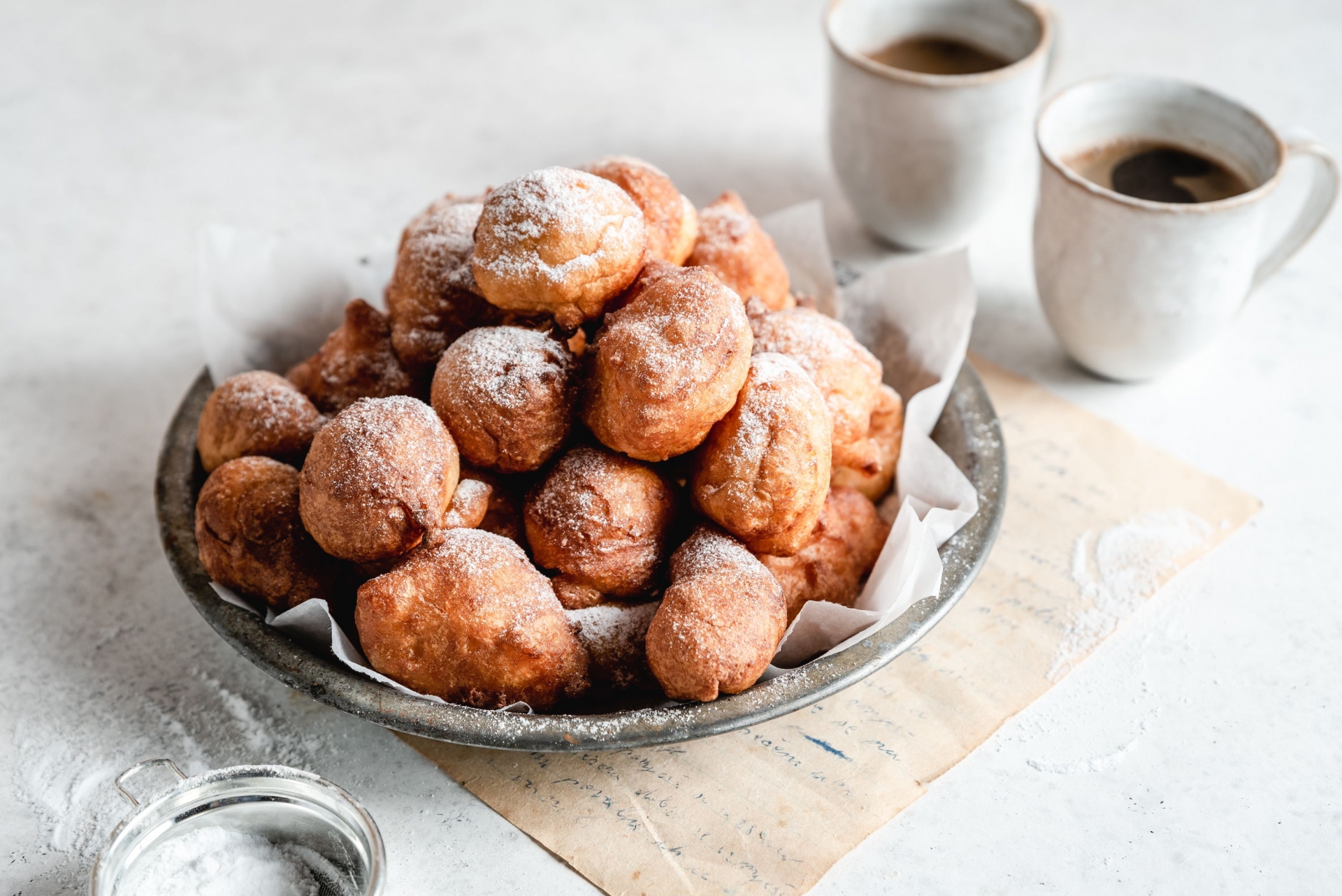 |
| Photo: The Spruce Eats |
1 (0.6 ounces) cake compressed fresh yeast
1 cup lukewarm milk
2 ¼ cups all-purpose flour
2 teaspoons salt
1 egg
¾ cup dried currants
¾ cup raisins
1 Granny Smith apple - peeled, cored and finely chopped
1-quart vegetable oil for deep-frying
1 cup confectioners' sugar for dusting
Preparation for Oliebollen
Step 1
After the yeast has been compressed, whisk it into the heated milk. Allow to dissolve over a few minutes. Put the flour and salt in a big bowl and sift them. Blend the egg and yeast mixture into the flour until a smooth batter is formed. Add the apple, raisins, and currants and stir. After covering the bowl, place it in a warm location to allow the batter to double in size. This should take an hour or so.
Step 2
Heat the oil in a deep-fryer, or heavy deep pan to 375 degrees F (190 degrees C). Use 2 metal spoons to shape scoops of dough into balls, and drop them carefully into the hot oil.
Step 3
Fry for about 8 minutes, or until the balls turn golden brown. The doughnuts ought to be moist rather than oily. The interior will be greasy and the exterior rough if the oil is not heated enough. Once the doughnuts are done, drain them on paper towels and sprinkle with powdered sugar. Transfer them to a platter and sprinkle some more powdered sugar on top. If at all possible, eat them hot.
Nutrition Facts About OliebollenPer Serving: 270 calories; protein 4.5g; carbohydrates 45.8g; fat 8.5g; cholesterol 17.1mg; sodium 404.7mg. |
Oliebollen Personalization Options
You can personalize your Dutchies and fill them with sweet and savory ingredients. Just add the options to the dough and stir through:
• Currants
• Raisins
• Apple
• Banana
• Chocolate chip
You can also use savory ingredients:
• Salmon
• Bacon
• Ham
How to Store Traditional Dutch Oliebollen
Just in case you do not eat all of these treats in one go, there are a number of ways you can store oliebollen:
• Outside the fridge – when you are going to eat them on the same day put them in a bowl and leave them out of the fridge
• Fridge – Store them in the fridge for a day or two
• Freezer – if you want to preserve longer store them in the freezer
How To Reheat Oliebollen?
There are also various ways to warm oliebollen.
• Oven – you can warm them in the oven. Preheat the oven to 200℉ put the oliebollen on a baking tray and heat them for 5 minutes or until warm.
• Skillet – you can also warm them in a skillet with a small layer of oil. Put the Dutch donuts in the skillet and turn them continuously to warm them through
• Air Fryer – if you have an Air Fryer it is a great way to warm oliebollen. Preheat the Air Fryer to 200℉ then put some parchment liner in the basket and put the oliebollen on top. Do not crowd the basket. Bake for 5 minutes or until warm
• Microwave – when you warm Dutch donuts you can put them in the microwave and warm them in 30-second increments. Check to see if the oliebollen are warm else repeat. Caution oliebollen turn soft and chewy in the microwave.
Oliebollen: Welcoming the New Year with a Dutch Tradition
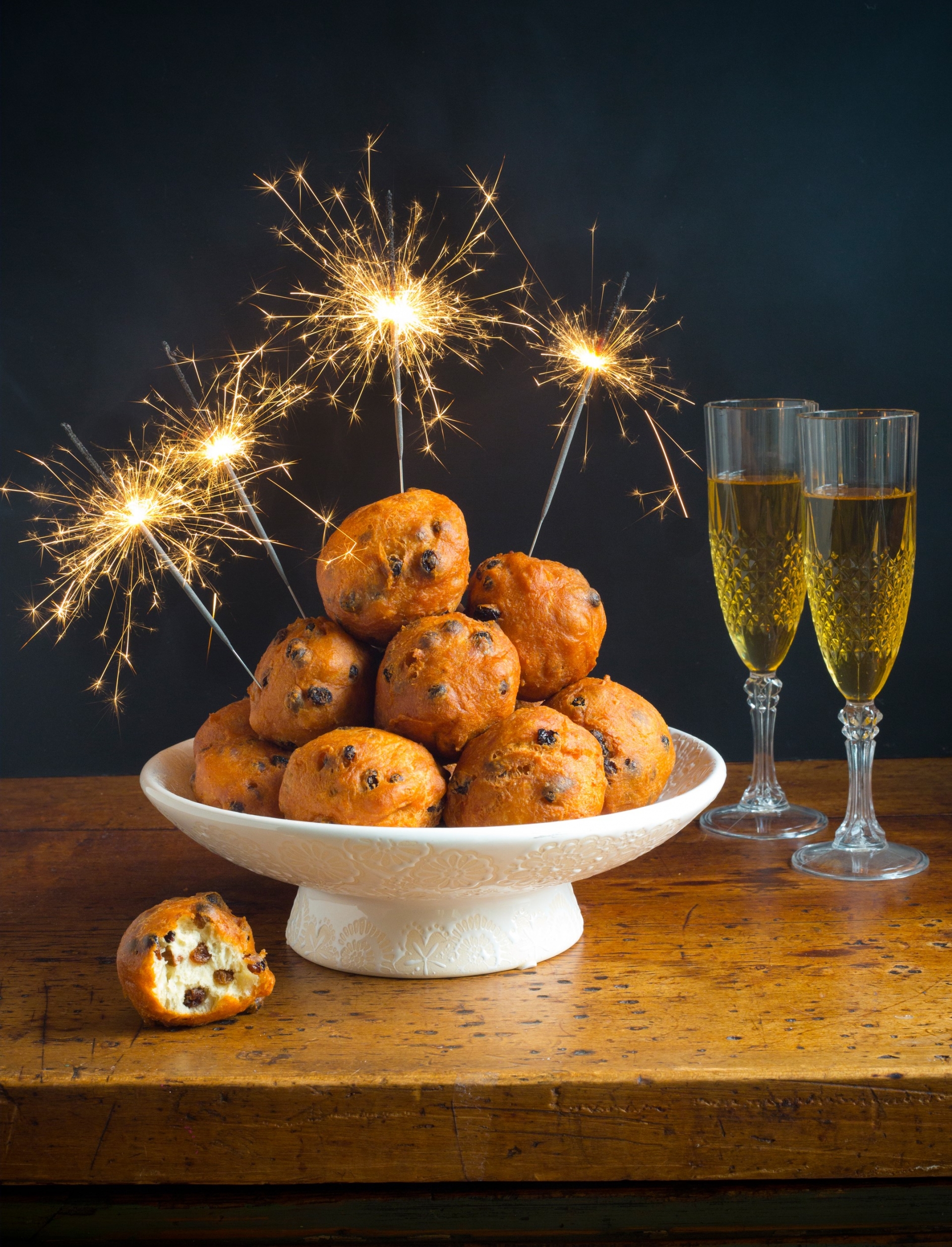 |
| Photo: Bakkerij De Greef |
Warm, deep-fried, powdered sugar-dusted treats called oliebol are customary on New Year's Eve in the Netherlands, where temperatures typically drop below zero. This traditional treat literally translates to "oil ball," but don't let that stop you. Oliebollen are the ideal balance of dough, sugar, and oil to please the palate. This crispy, filling relative of fritters and zeppolis can be a delectable way to warm up on a wintry evening.
Oliebollen isn't just eaten on New Year's Eve in the Netherlands; it's also frequently enjoyed with a glass of bubbly as a way to celebrate the start of a new year. Enjoy both with holiday fireworks or the flickering city bonfires that burn down abandoned Christmas trees every year.
There are oliebol variations in a number of nations. The delightful treat is also known by the unfortunate moniker "lard balls," or "smoutebollen," in Belgium, and by the more tasteful name "croustillons" in France. These tasty deep-fried balls go by the names fritole or blinci in Italy, Croatia, or Slovenia. They are known as ustipci in Serbia, and the Danish treat ebleskiver—which resembles popovers somewhat—is akin to them.
Perhaps as a warning to eat well before the advent of mid-winter want, the ritual of eating these luscious lumps of sugary dough began with a less than appetizing story. Eating oliebollen was thought to be an effective means of fending off the whims of Perchta, a cruel pagan goddess. Though her Teutonic name meant glorious or bright, she wasn't always amiable.
It was said that the goddess would fly around with evil spirits during the 12 Days of Christmas, searching for food. She might even cut open the stomachs of those who had already eaten in order to get at their food while on her mission by using her sword. Eating oliebollen was said to protect you because Perchta's sword was able to slip off of her victims due to the fat absorbed from the cooking oil. Although the vengeful Perchta is no longer a concern, some Dutch citizens may benefit from the fat in oliebollen as a means of preventing hypothermia related to another customary New Year's celebration: swimming in chilly waters on New Year's Day.
While Perchta has been mentioned since at least the tenth century, nobody knows for certain when the original oliebollen recipe was recorded. The 17th century saw the first recorded mention in Dutch cookbooks. A basket of oliebollen was also depicted in a painting by Dutch Old Master Albert Cuyp at that time.
During the same century, oliebollen—then known as oliekoeken—were introduced to New Amsterdam and other Dutch colonies by Dutch immigrants. Dutch food historian Peter G. Rose, who lives in the United States, claims that oliebollen, like many other immigrants to the country, started to change and eventually became the doughnut, an equally delicious but less fatty treat.
Since the 17th century, the Dutch have been making oliebollen with a batter that primarily consists of flour, eggs, milk, and a leavening agent. After deep-frying the dough in hot oil, it is dusted with sugar. There are variations because the recipe can also call for raisins, candied peel, or currants. Cinnamon is used in some recipes.
More Traditional Dutch Recipes
• Oven-baked puff pastry appelflappen Dutch apple beignets
• Traditional Dutch pancakes
• The best Dutch apple pie
• Dutch Christmas kerststol stollen bread
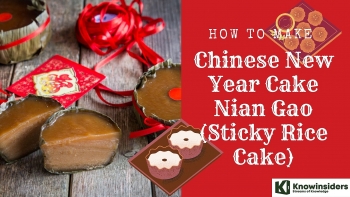 How to Make Nian Gao (Sticky Rice Cake) - Chinese New Year Cake How to Make Nian Gao (Sticky Rice Cake) - Chinese New Year Cake With New Year coming close, let's learn to make Chinese New Year Nian Gao - The traditional beloved cake that brings delicious and distinctive flavors ... |
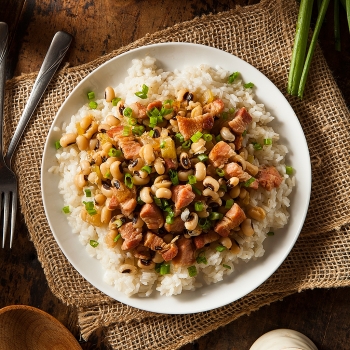 How to Make Hoppin' John with Simple Steps How to Make Hoppin' John with Simple Steps Some Americans eat certain foods either at New Year's Eve parties with Hoppin' John, a southern dish made of black-eyed peas. |
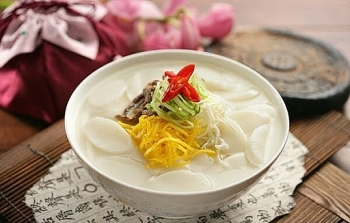 How to Make Korean Tteokguk on New Year How to Make Korean Tteokguk on New Year Have you ever heard about Tteokguk - a Korea's traditional New Year food? |


























